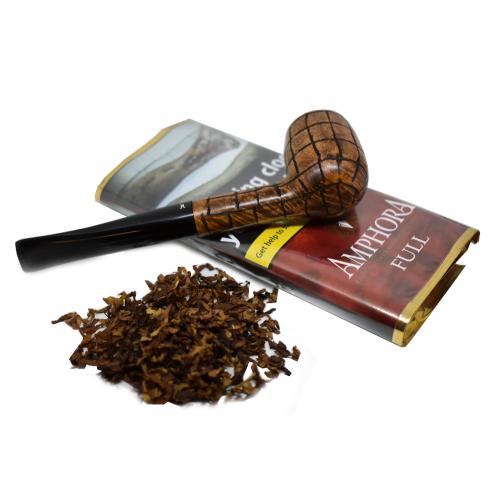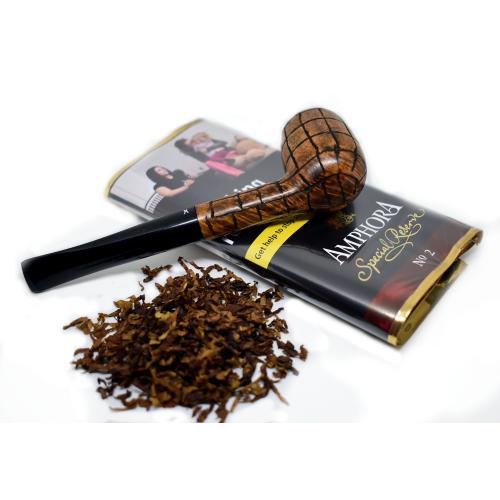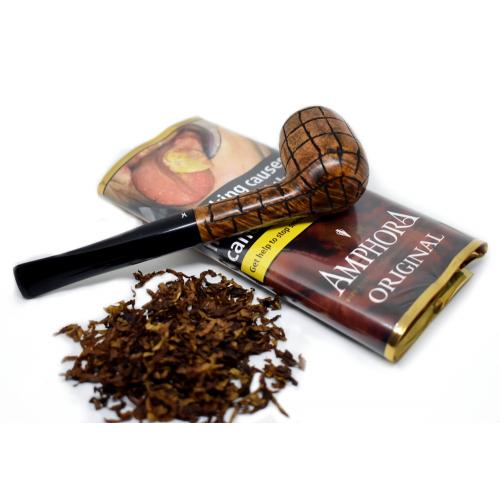When passion guides your hands, you are bound to create something incredible. Such is the story of Caminetto/Ascorti.
If you have followed these posts of late, you will know already that Italy is one of the most famous countries for pipe making. This is further proof. Get ready; we are going back to the Sixties.
Just before the decade began, Giuseppe Ascorti started his path to pipe-maker supreme in 1959 when he joined Castello. At the time, Carlo Scotti was the owner. Perseverance and talent immediately meant Ascorti stood out as an impressive, prospective pipe maker. A year later, Giuseppe’s wife acquired the family-owned business, which allowed him to invest in his own workshop.
Ascorti then met Luigi Radice while working at Castello and they decided to open a business together. It was now 1968. In the early days, one of the first to support “Ascorti & Radice” was Gianni Davoli, owner of a tobacco shop in Milan. Davoli understood the value of the duo’s pipes and decided to send some samples to his connections in the United States. The pipes were a success, and Davoli asked to be the sole international distributor. And so Caminetto was born.
Incidentally, you might wonder about the origins of the name. As always, there is a mythical story behind it. According to legend, Ascorti, Radice and Davoli were sitting by the fireplace one evening and enjoying their pipes and some wine. During this quality time, Davoli had the idea of associating the pipes with the fireplace’s chimney, the word for which in Italian is “caminetto”.
_
(Indeed, there is more to the name than just where the founders rested up. Davoli made a more profound connection. In Italian, the bottom part of the pipe bowl is called “Fornello” or “Focolare”. A “Focolare” is, like caminetto, also a word that Italians use to describe the fireplace. Perhaps Davoli made that connection or maybe he simply compared the bowl of the pipe to a chimney. Whatever the truth, the trio became famous and called themselves “I Tre Camini”, which means “the three chimneys”. The company’s logo is a moustache, and legend maintains that this is a homage to the company founders, as Ascorti and Radice sported a large moustache. In time, naturally enough with the competitive natures involved as you will read ahead, Davoli followed suit).
_
To promote the company, Davoli started focussing on his strengths: namely marketing. Castello pipes were extremely popular at that time, but they were difficult to find and expensive because of the production scale. Davoli started to promote Caminetto pipes as an alternative to Castello pipes, offering the same quality and care, and attention to detail, but at around half the price. The primary seller in America was The Tinder Box International (TTBI), which was highly successful at distributing and promoting the Caminetto pipes, which would ultimately become the Ascorti. (They remain listed on the Tinder Box website). Thanks to the excellent work of Ascorti and Radice, and the collaboration between Davoli and TTBI, Caminetto became hugely popular, worldwide.
At the same time as this welcome success, popularity brought high demand. The artisans soon reached what to them were the absolute production limits. The whole family got involved, and, from almost childhood, Roberto Ascorti (the current owner) started to help in the workshop. To maintain the company at the top, Davoli invested a large sum of money in machinery (and on the back of this became a co-owner). In 1973, Davoli became the major shareholder of the company, and continued success saw demand grow from 3,000 pipes a year to 7,000 with Davoli celebrated as the “Master pipe maker, designer and sole creator of the Caminetto”.
Ultimately, the seventies proved a peak for Caminetto. The increase in production forced the brand to move toward a streamlined manufacturing process, which meant that Radice had to give up his artistic approach to pipe making. As can happen, the increase in output threatened quality standards, and Radice was concerned about this. Ascorti shared his concern, not least as they had based their whole lives on producing high-quality art pieces. Undeterred, Davoli allegedly insisted on focusing on the production volumes.
 The end was nigh. After attending art school and his military service, Roberto Ascorti wanted to start his own pipe-making path and his father, Giuseppe, wanted him to join the company. Davoli apparently fought against it because with Roberto in the company he feared losing his grip amid a new Ascorti alliance. By 1979, the rift was irreparable when foreseen quality issues arose in America. Moreover, Castello threatened legal action on the grounds of copyright infringements.
The end was nigh. After attending art school and his military service, Roberto Ascorti wanted to start his own pipe-making path and his father, Giuseppe, wanted him to join the company. Davoli apparently fought against it because with Roberto in the company he feared losing his grip amid a new Ascorti alliance. By 1979, the rift was irreparable when foreseen quality issues arose in America. Moreover, Castello threatened legal action on the grounds of copyright infringements.
For the artisans, it was the breaking point. Radice was a mere employee in the company, and Ascorti had little power, with Davoli maintaining complete control over Caminetto. The founders departed and, with “I tre Camini” disbanded at the end of the year, Radice was without prospects and Ascorti had a workshop but no company.
We have a happy ending of sorts. Loyalty and good manners paid off in the end as the crew that Ascorti trained through the years followed him to join a new establishment. Giuseppe and Roberto Ascorti founded their own company, “Ascorti.” At the same time, Radice managed to establish himself in 1980 as an independent pipe maker. In the following years, he prospered, and to this day, his pipes can be found worldwide and praised for the quality and care for details.
And Davoli? Not only did he lose the main backbone of the company he also lost the workshop from a fire which reduced the building to ashes. With no artisans, no workshop, and no designs, as well as quality issues, the golden era of Caminetto came to an end, consumed by the flames.
The Ascorti family kept working on their new venture. This included reviving the Caminetto name in 1986. In all, new pipes with improved design but with the same care for details and standards of quality on which his father always insisted.
To this day, Ascorti still follows the founders’ principles; in short, fine briar, incredible detail, and astonishing designs. With a Caminetto/Ascorti pipe, it doesn’t matter where you are in your pipe smoking life. You will immediately appreciate them and enjoy beautiful smokes. Keep an eye on our catalogue because you might join the small group of lucky collectors to own a pipe that is not only a beautifully crafted art piece but also a statement of talent and perseverance.
As the Italians say, and I have also said of late, la prosima volta. Meaning, until next time.
-Calum




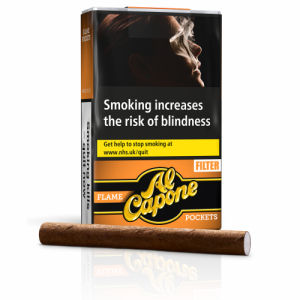
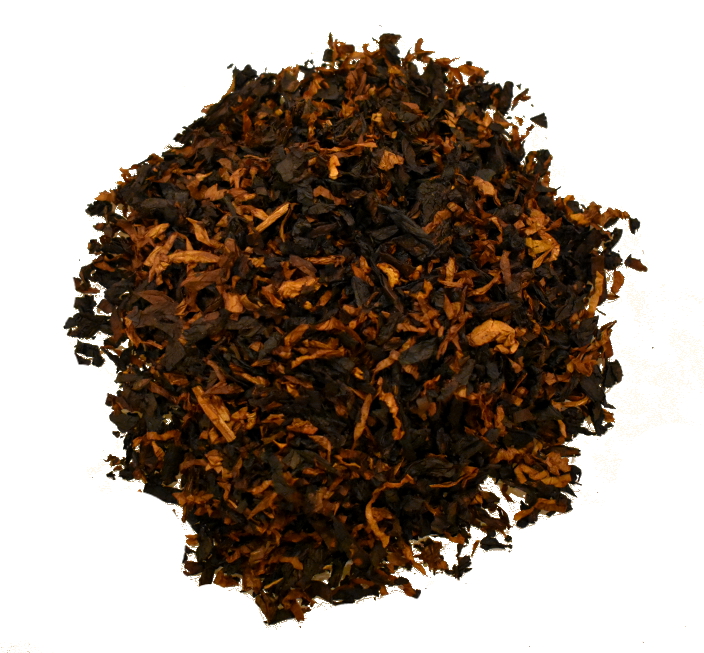
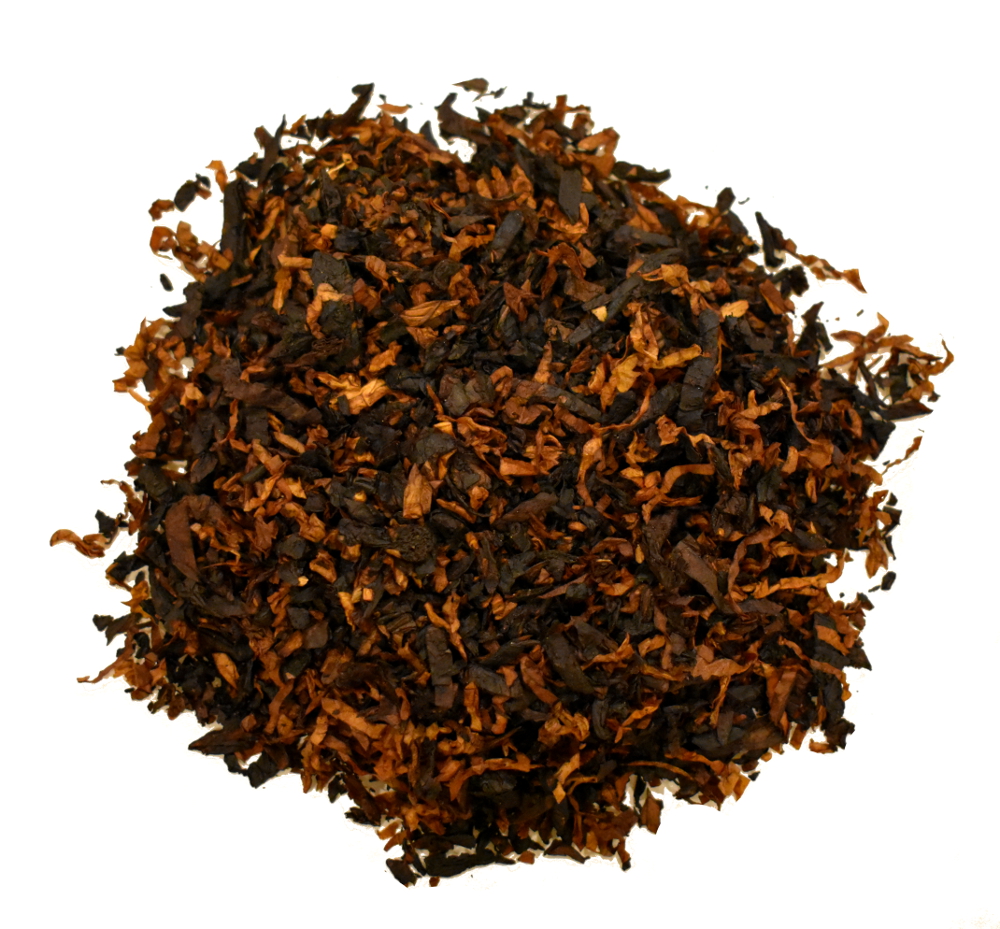
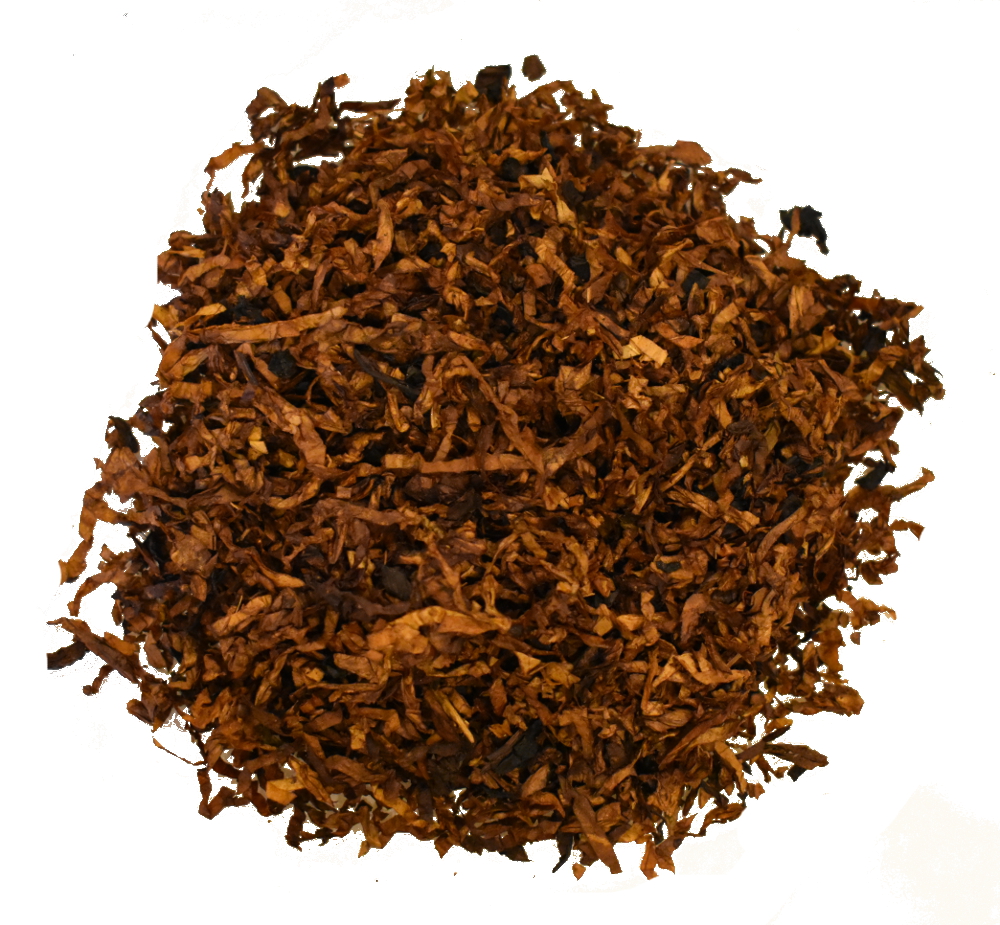
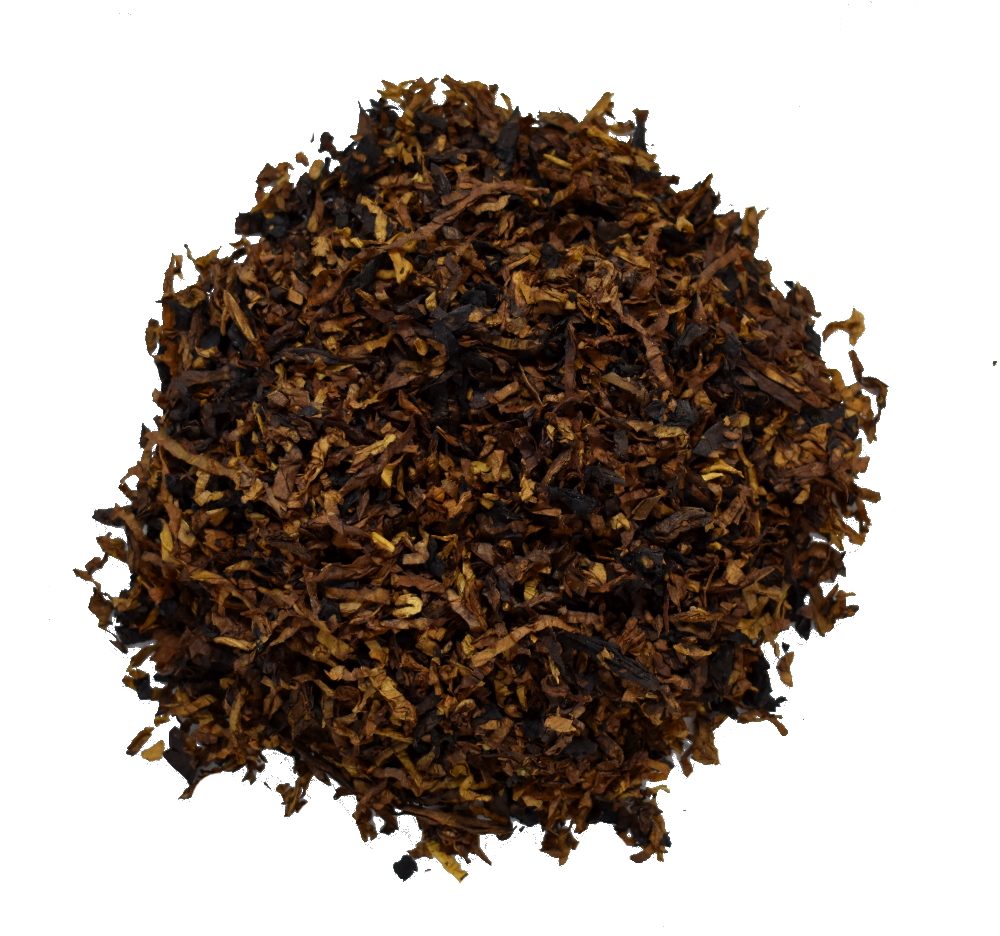 RC
RC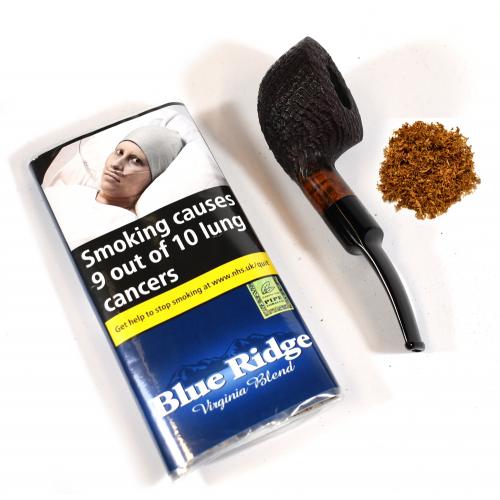
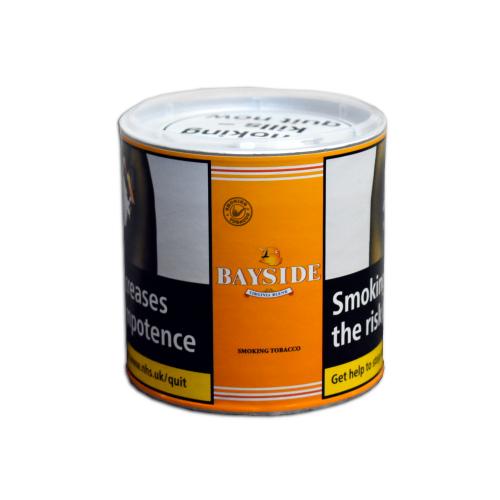
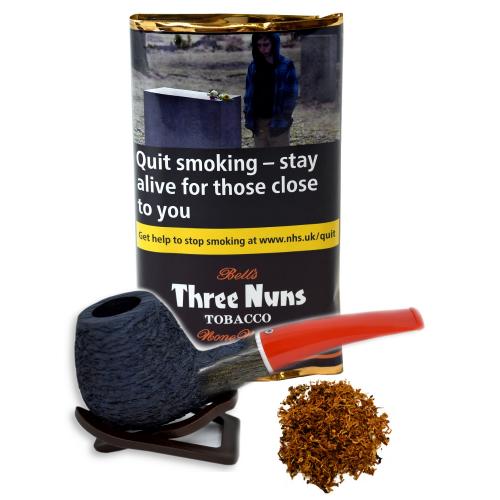
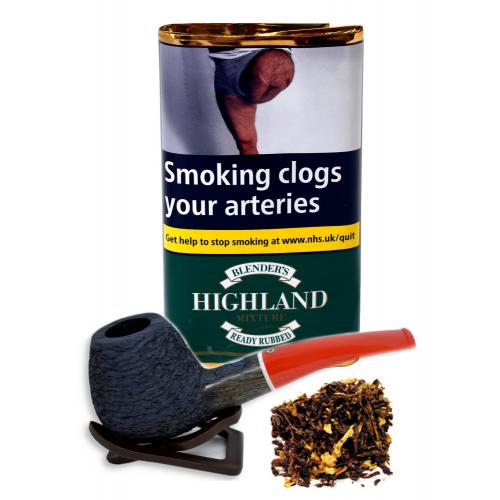

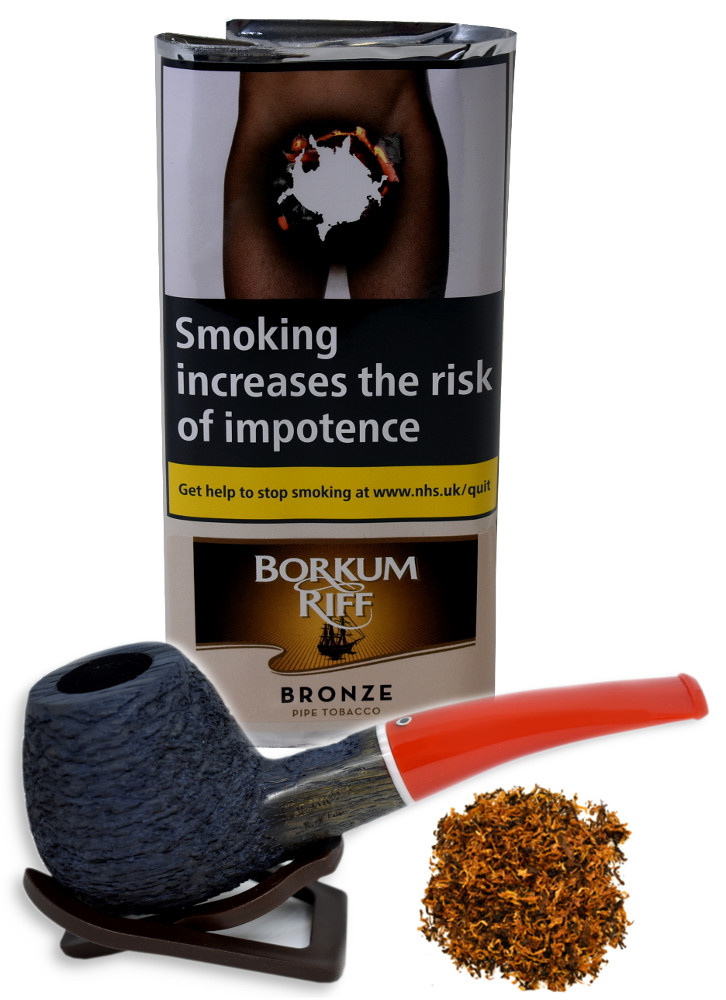
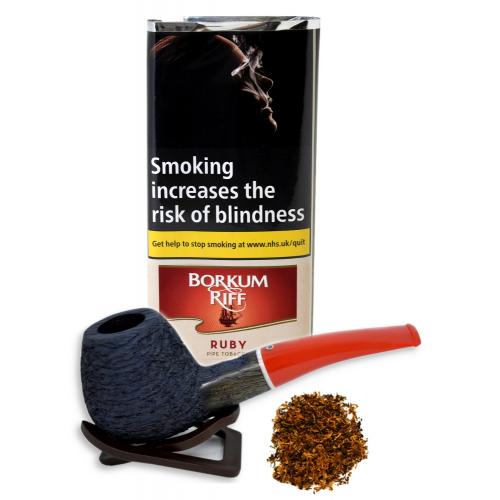
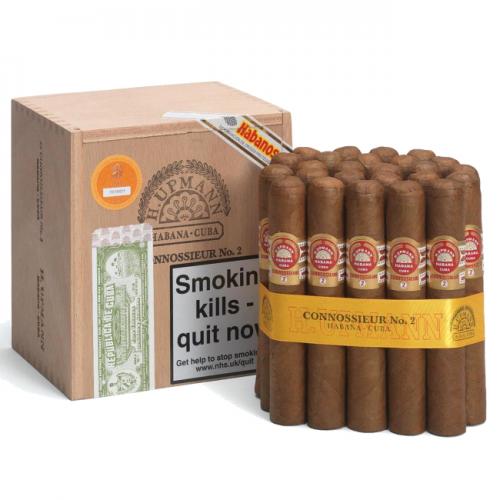


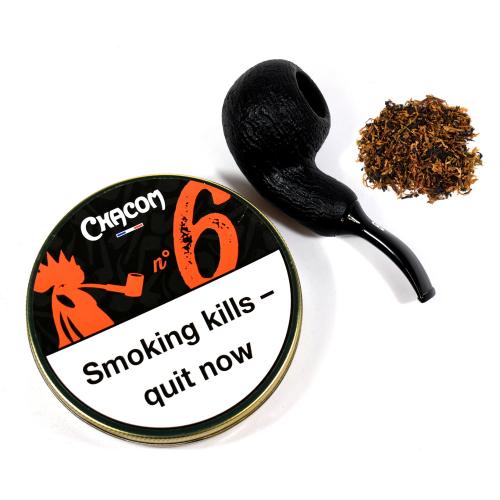 In the last entry, I mentioned the ratio of tobacco formats across with range. But what about the other distinction between pipe tobacco blends: Trad/English blends (/aromatics) Vs Cased Aromatics? So far it stands at three English (No. 1, 4 and 5) and two cased aromatics. So it’s nice to see that Chacom No.6 rounds this out to 3:3. In my original blog on this range I commented on how much I appreciated them going a bit off-piste with their casing choices, shunning the more tried and true flavours such as cherry, in favour of things like Yellow Plum and Vanilla Bourbon. I’m ecstatic to see they’ve carried this ethos forward by using a combination of Rum, Espresso and Caramel, topping a classic aromatic base of Black Cavendish, Virginia and Burley.
In the last entry, I mentioned the ratio of tobacco formats across with range. But what about the other distinction between pipe tobacco blends: Trad/English blends (/aromatics) Vs Cased Aromatics? So far it stands at three English (No. 1, 4 and 5) and two cased aromatics. So it’s nice to see that Chacom No.6 rounds this out to 3:3. In my original blog on this range I commented on how much I appreciated them going a bit off-piste with their casing choices, shunning the more tried and true flavours such as cherry, in favour of things like Yellow Plum and Vanilla Bourbon. I’m ecstatic to see they’ve carried this ethos forward by using a combination of Rum, Espresso and Caramel, topping a classic aromatic base of Black Cavendish, Virginia and Burley.
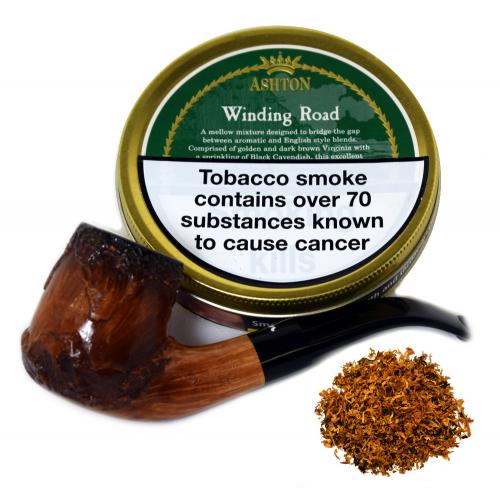
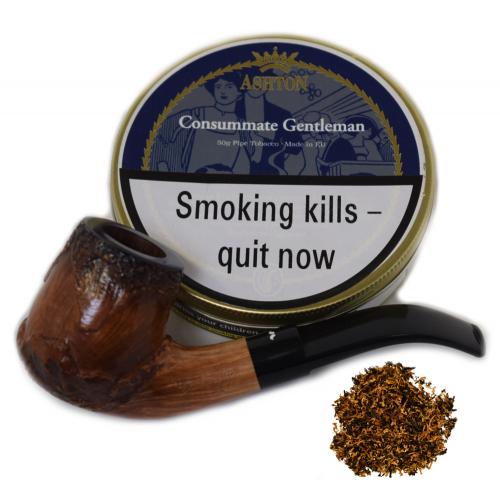 Consummate Gentleman
Consummate Gentleman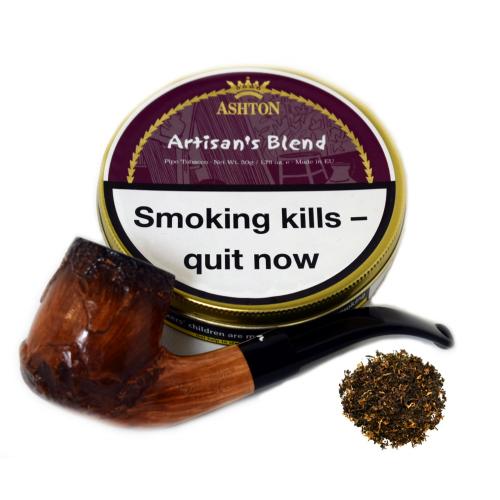 burning. This is built upon with a stunning combination of Latakia, Turkish and Oriental tobaccos and a hint of Perique, creating a perfectly harmonised blend that is subtly sweet, while also showing off all the flavours that can be naturally coaxed from fine tobacco, without the need for casing or flavouring. There are hints of perfumed smoke, cracked black pepper, smoked wood, sweet smoked-cured meats, to name just a few. I compared Consummate Gentleman to the lighter, “introductory” English blends, such as Early morning and First Bowl. Artisan’s Blend is right on the other end of the spectrum, far more akin to the heady, full bodied likes of
burning. This is built upon with a stunning combination of Latakia, Turkish and Oriental tobaccos and a hint of Perique, creating a perfectly harmonised blend that is subtly sweet, while also showing off all the flavours that can be naturally coaxed from fine tobacco, without the need for casing or flavouring. There are hints of perfumed smoke, cracked black pepper, smoked wood, sweet smoked-cured meats, to name just a few. I compared Consummate Gentleman to the lighter, “introductory” English blends, such as Early morning and First Bowl. Artisan’s Blend is right on the other end of the spectrum, far more akin to the heady, full bodied likes of 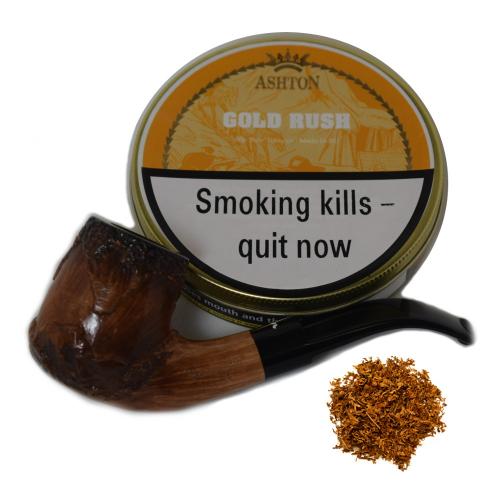
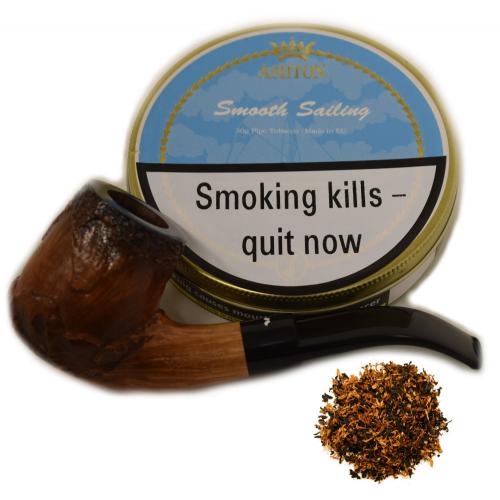 After starting with an ever so slightly aromatic blend, I’m staying in the same area but turning the dial up significantly with Smooth Sailing. It is a Virginia, Burley and Cavendish blend, topped with a flavour of nuts, cocoa and maple. This is the blend I referred to in the intro as one of my favourite aromatics ever. The reason I like it so much is that it’s a really nice change from the more common fruity aromatics on the market. It has much more of a pudding-y or cakelike taste. The fact I use the word “Taste” there is relevant too; many blends sneakily call themselves “Aromatic” rather than “Flavoured” to protect themselves in the event of people saying they don’t think the taste is as good as the aroma. Well, Smooth Sailing can confidently call itself a Flavoured tobacco, as it tastes just as good as it smells… and that taste is divine.
After starting with an ever so slightly aromatic blend, I’m staying in the same area but turning the dial up significantly with Smooth Sailing. It is a Virginia, Burley and Cavendish blend, topped with a flavour of nuts, cocoa and maple. This is the blend I referred to in the intro as one of my favourite aromatics ever. The reason I like it so much is that it’s a really nice change from the more common fruity aromatics on the market. It has much more of a pudding-y or cakelike taste. The fact I use the word “Taste” there is relevant too; many blends sneakily call themselves “Aromatic” rather than “Flavoured” to protect themselves in the event of people saying they don’t think the taste is as good as the aroma. Well, Smooth Sailing can confidently call itself a Flavoured tobacco, as it tastes just as good as it smells… and that taste is divine.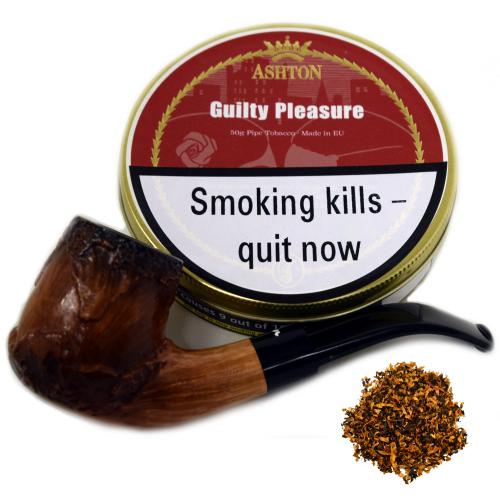
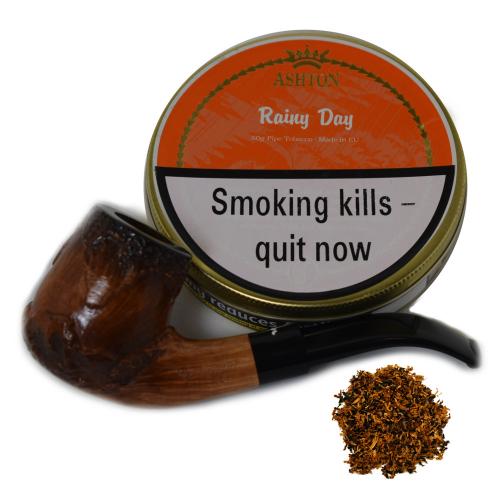
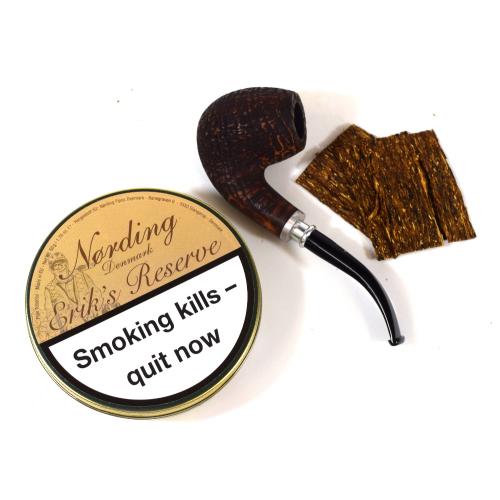
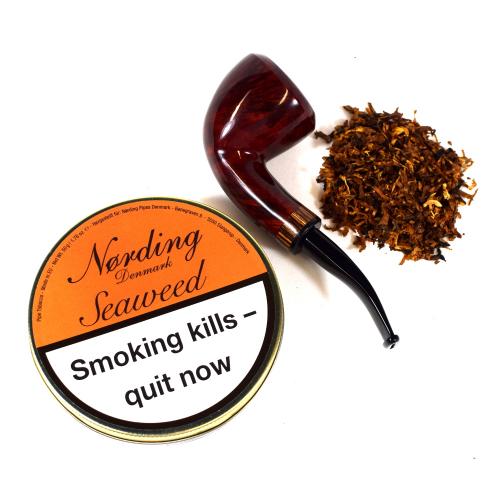 Next up we have Sea Weed. This takes us in a different direction as it is a traditional yet striking Scandinavian style aromatic tobacco. The tobacco blend is a mix of Virginia, Burley and Black Cavendish, with a “Caramel and Cream” casing. One thing that immediately struck me on opening the tin was just how pronounced the “Cream” element of the casing is. All too often, when tobaccos promise a cream flavour, it turns out to be a bit nothing-y; just a vague hint or a light tobacco that gives the impression of creaminess. However, I’ll be damned if this blend doesn’t actually smell and taste of cream. The caramel side of the casing pulls its weight equally well too, which when combined with the cream taste, gives a flavour similar to crème brulee. As far as the casing: tobacco taste ratio goes, I’d call this a textbook Scandinavian aromatic, as the casing is strong enough to be noticed, but not so strong that you can’t taste the tobacco. Perfect balance.
Next up we have Sea Weed. This takes us in a different direction as it is a traditional yet striking Scandinavian style aromatic tobacco. The tobacco blend is a mix of Virginia, Burley and Black Cavendish, with a “Caramel and Cream” casing. One thing that immediately struck me on opening the tin was just how pronounced the “Cream” element of the casing is. All too often, when tobaccos promise a cream flavour, it turns out to be a bit nothing-y; just a vague hint or a light tobacco that gives the impression of creaminess. However, I’ll be damned if this blend doesn’t actually smell and taste of cream. The caramel side of the casing pulls its weight equally well too, which when combined with the cream taste, gives a flavour similar to crème brulee. As far as the casing: tobacco taste ratio goes, I’d call this a textbook Scandinavian aromatic, as the casing is strong enough to be noticed, but not so strong that you can’t taste the tobacco. Perfect balance.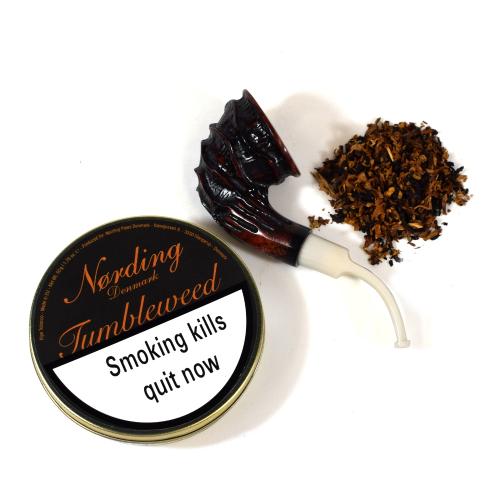 Vanilla casing. Classic, right? The reason I call this blend “arresting” is that the aromatic casing is surprisingly pronounced for a Scandinavian Style Aromatic. The blenders also describe a more floral element, along with the vanilla, but to me it all comes together to make something a bit different. This is especially noticeable in the cold aroma. In fact, from the second you unseal and unscrew the lid, the aroma immediately seeps out to entice anyone in the vicinity. This aroma lead to a debate between me and my colleague, Karen. My immediate thought on the aroma was chocolate sponge cake, while she thought it was more of a fruit cake. Either way, we could agree it was definitely very “Cakey.” Once lit, I found the taste to be a combination of chocolate and a gentle vanilla undertone. Once again, I found the casing to be surprisingly strong for a Scandi Aro – almost bordering on American Style – but I could just about taste the tobacco underneath.
Vanilla casing. Classic, right? The reason I call this blend “arresting” is that the aromatic casing is surprisingly pronounced for a Scandinavian Style Aromatic. The blenders also describe a more floral element, along with the vanilla, but to me it all comes together to make something a bit different. This is especially noticeable in the cold aroma. In fact, from the second you unseal and unscrew the lid, the aroma immediately seeps out to entice anyone in the vicinity. This aroma lead to a debate between me and my colleague, Karen. My immediate thought on the aroma was chocolate sponge cake, while she thought it was more of a fruit cake. Either way, we could agree it was definitely very “Cakey.” Once lit, I found the taste to be a combination of chocolate and a gentle vanilla undertone. Once again, I found the casing to be surprisingly strong for a Scandi Aro – almost bordering on American Style – but I could just about taste the tobacco underneath.